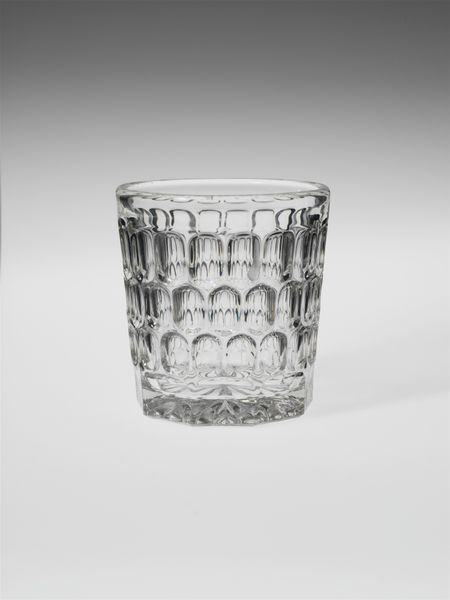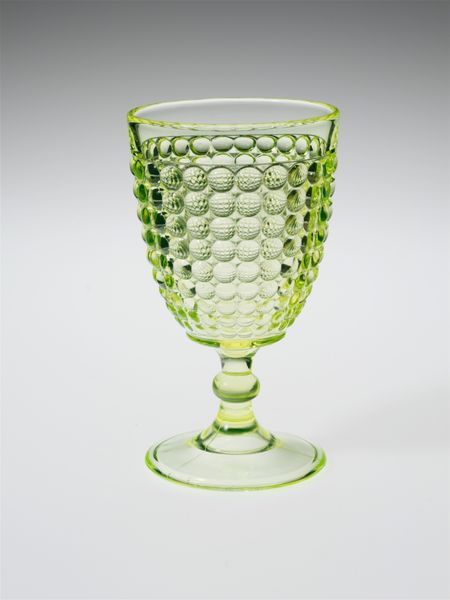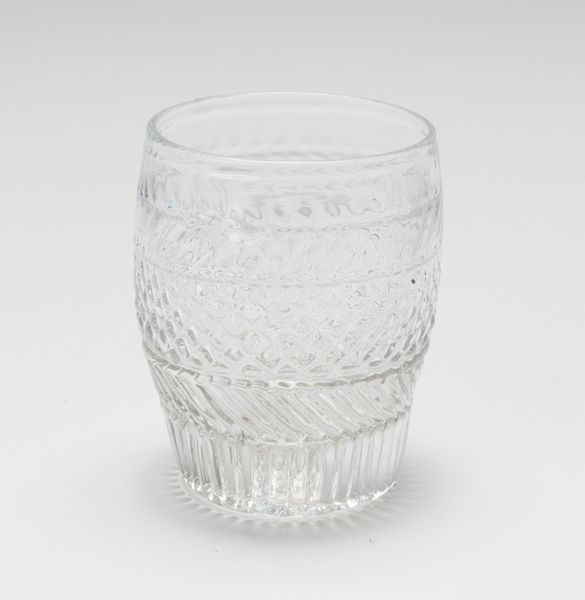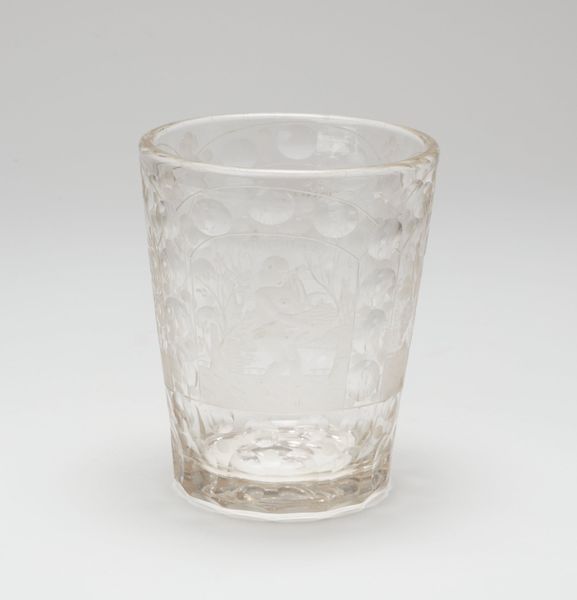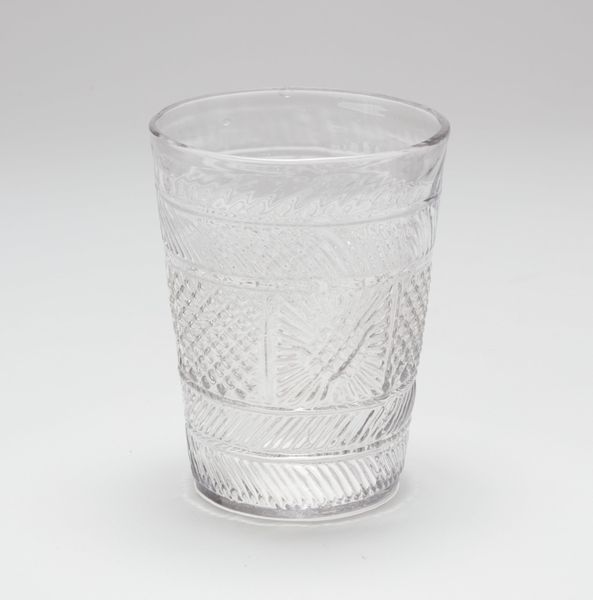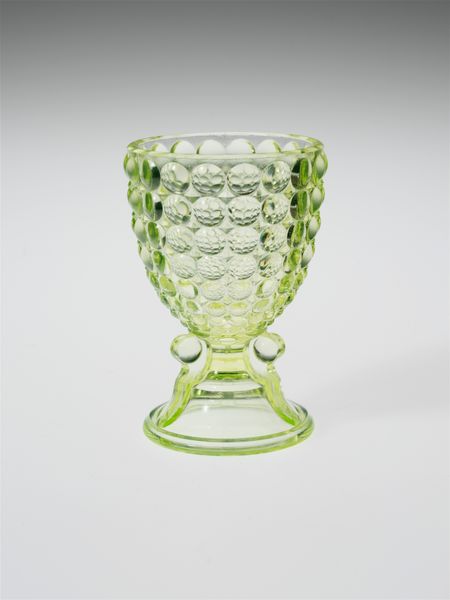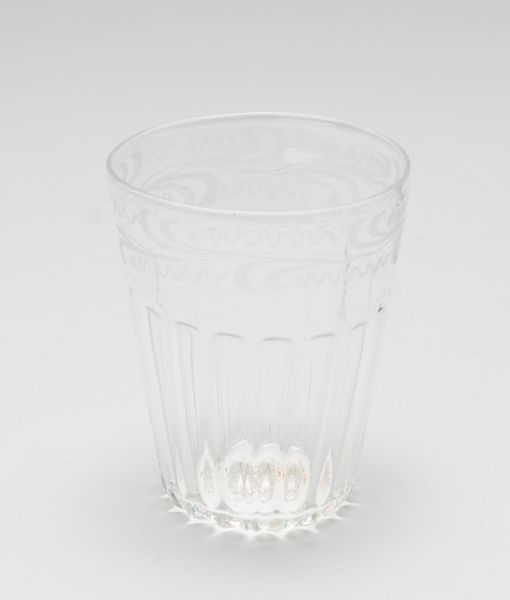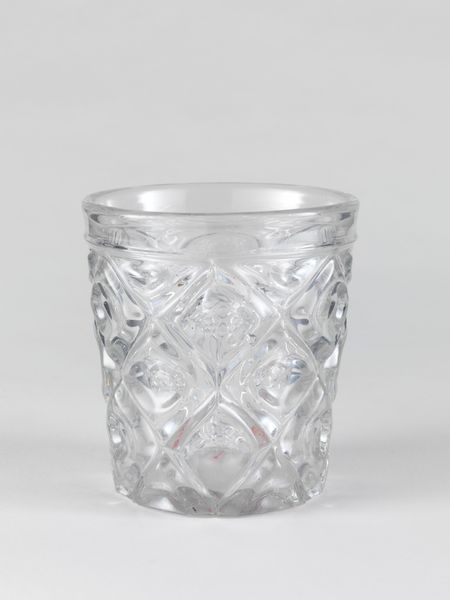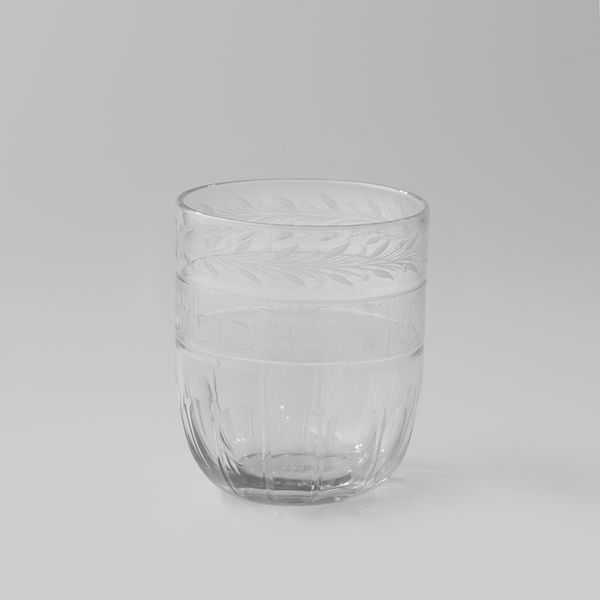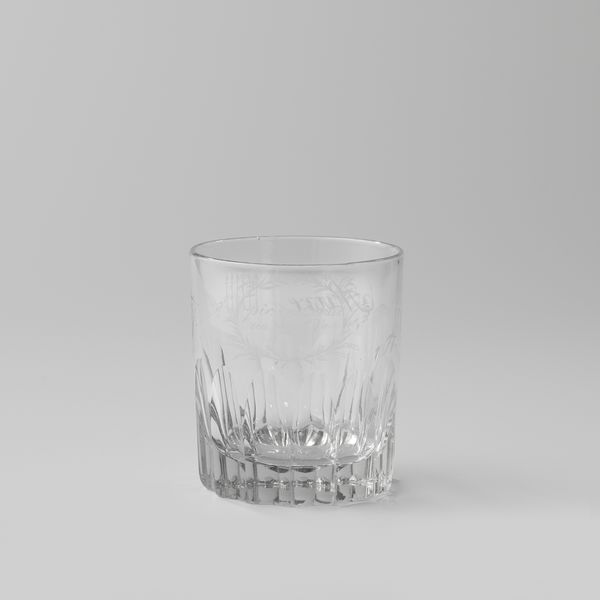
photography, glass
#
advertising product shot
#
product studio photography
#
3d rendering
#
product fashion photography
#
virtual 3d design
#
photography
#
glass
#
product design photgrpaphy
#
3d digital graphic
#
metallic object render
#
united-states
#
3d rendered logo
#
product render
Dimensions: H. 4 1/8 in. (10.5 cm); Diam. 3 1/8 in. (7.9 cm)
Copyright: Public Domain
Editor: Here we have "Tumbler," a glass photograph produced by Richards and Hartley Flint Glass Co. between 1885 and 1888. The color and the repeated bubble pattern give it a whimsical, almost fantastical feel. How do you interpret this work? Curator: This seemingly simple tumbler offers a compelling glimpse into the intertwined histories of industry, gender, and domesticity. Consider the late 19th century: mass production was transforming everyday life. Glassware, once a luxury, became accessible to the burgeoning middle class. But who was buying it, and for what purpose? Editor: Primarily women managing the household, I would imagine. Curator: Precisely. This object speaks to the role of women as consumers and homemakers during this period. The 'whimsical' design you noted likely served a purpose: to appeal to the feminine tastes of the time, reinforcing societal expectations about domestic roles. We must also ask: under what labor conditions were these objects being produced, and by whom? Editor: That is a dimension I had not considered – the often-unseen labor behind everyday objects. Were there debates around industrial production and aesthetics during that time? Curator: Absolutely. The Arts and Crafts movement, a reaction against industrialization, was gaining momentum. Thinkers and artists questioned the social and ethical implications of mass-produced goods. Was this tumbler, in its own way, contributing to or resisting those discussions? How might this glass, its accessibility, challenge assumptions of luxury along lines of race and class? Editor: So, even something as simple as a glass tumbler can open a window onto much larger social and political conversations. Curator: Exactly. It’s about looking beyond the object itself to understand its place within a complex web of historical and social forces. Editor: This has reshaped how I perceive the relationship between art, history, and everyday life. Thank you!
Comments
No comments
Be the first to comment and join the conversation on the ultimate creative platform.
